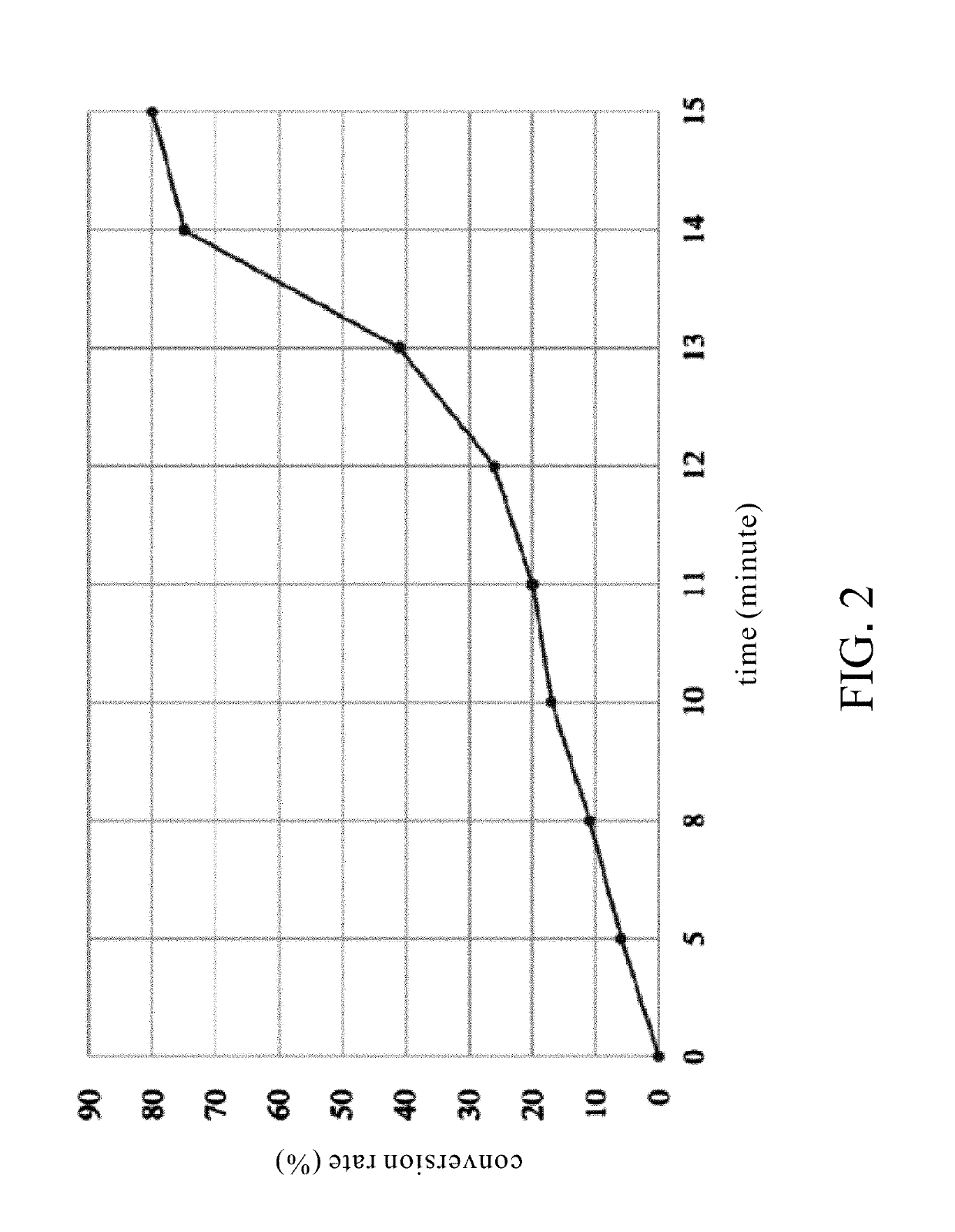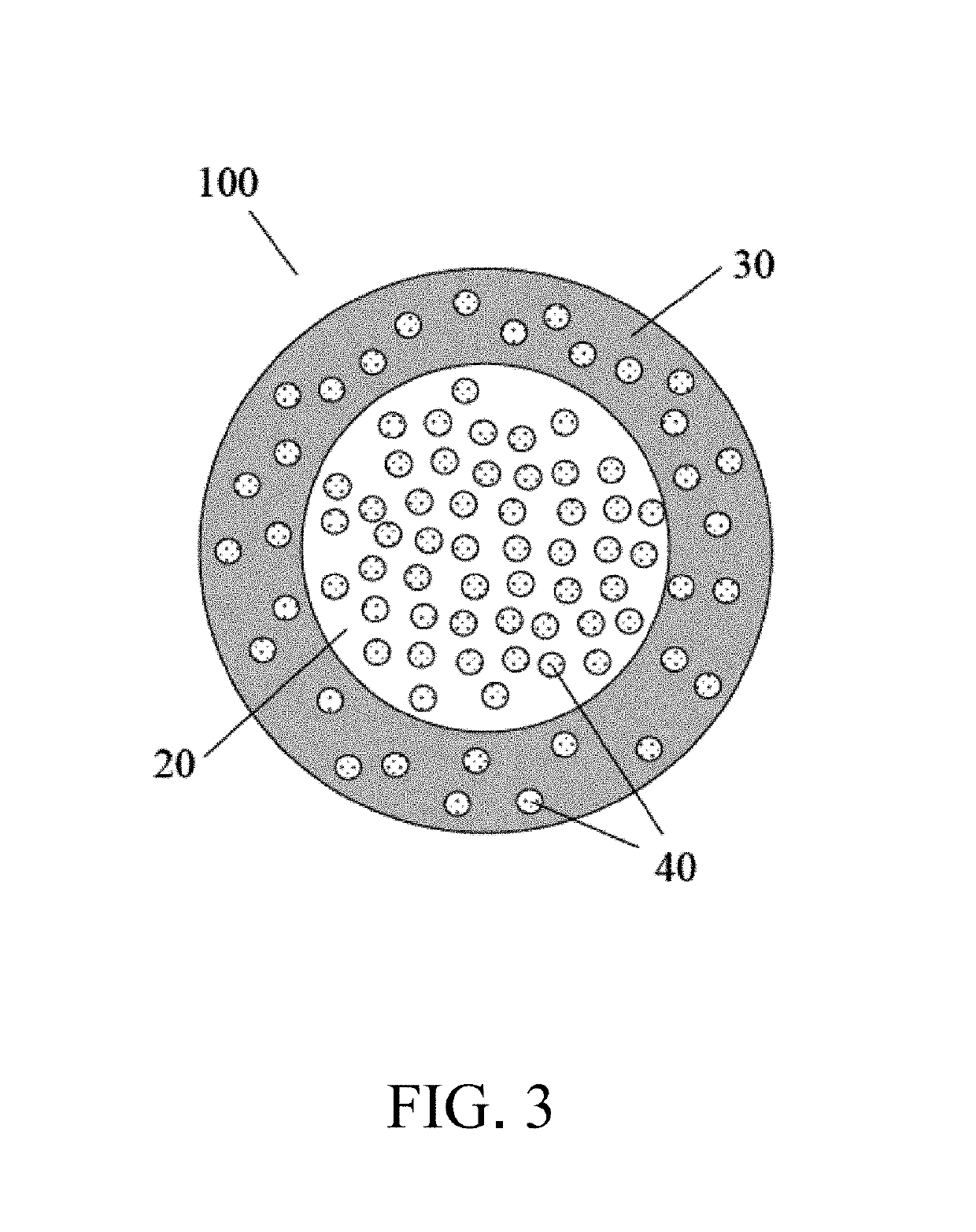Biocide-encapsulated microcapsule for use in paint
a technology of biocide and microcapsules, which is applied in the direction of biocide, paints with biocides, coatings, etc., can solve the problems of paint density deterioration, and achieve the effect of preventing long-term biofouling
- Summary
- Abstract
- Description
- Claims
- Application Information
AI Technical Summary
Benefits of technology
Problems solved by technology
Method used
Image
Examples
embodiment 1a
capsules Enclosed by a Hydrophobic Core
[0033]Introduce 10 g of styrene, 0.5 g of acrylic acid, and 8.57 g of biocide DCOIT into a two-neck round-bottom flask. Then, deionized water was introduced into the flask until the total weight of the solution therein reached 100 g. Afterward, put the flask in an oil bath to begin reflux. After the solution had started to boil, 0.13 g of potassium persulfate was added to the solution, and then the reaction took place for two hours. At the end of the reaction, the solution underwent a centrifugal separation process to remove a supernatant. At last, the resultant solution was left undisturbed and dried at room temperature to produce biocide microcapsules enclosed by a hydrophobic core.
embodiment 1b
capsules Enclosed by a Hydrophobic Core
[0034]10 g of styrene and around 0.5 g of acrylic acid were heated in an aqueous solution until it boiled. Then, 0.13 g of potassium persulfate was added to the solution to undergo free radical polymer polymerization to form a polymer hydrophobic embryo. Afterward, biocide DCOIT was added to the solution to undergo microencapsulation. At the end of the reaction, the solution underwent a centrifugal separation process to remove a supernatant. At last, the resultant solution was left undisturbed and dried at room temperature to produce biocide microcapsules enclosed by a hydrophobic core.
embodiment 2
ocapsules Enclosed by a Cross-Linking Hydrophobic Core
[0035]The objective of Embodiment 2 is to effect a cross-linking reaction of a cross-linking agent divinylbenzene and styrene. Introduce 10 g of styrene, around 0.5 g of acrylic acid, 8.57 g of biocide DCOIT, and 2 g of divinylbenzene into a two-neck round-bottom flask. Then, deionized water was introduced into the flask until the total weight of the solution therein reached 100 g. Afterward, put the flask in an oil bath to begin reflux. After the solution had started to boil, 0.13 g of potassium persulfate was added to the solution, and then the reaction took place for two hours. At the end of the reaction, the solution underwent a centrifugal separation process to remove a supernatant. At last, the resultant solution was left undisturbed and dried at room temperature to produce biocide microcapsules enclosed by a cross-linking hydrophobic core. The objective of Embodiment 2 is to effect cross-linking and thereby polymerization ...
PUM
| Property | Measurement | Unit |
|---|---|---|
| Hydrophilicity | aaaaa | aaaaa |
| Hydrophobicity | aaaaa | aaaaa |
Abstract
Description
Claims
Application Information
 Login to View More
Login to View More - R&D
- Intellectual Property
- Life Sciences
- Materials
- Tech Scout
- Unparalleled Data Quality
- Higher Quality Content
- 60% Fewer Hallucinations
Browse by: Latest US Patents, China's latest patents, Technical Efficacy Thesaurus, Application Domain, Technology Topic, Popular Technical Reports.
© 2025 PatSnap. All rights reserved.Legal|Privacy policy|Modern Slavery Act Transparency Statement|Sitemap|About US| Contact US: help@patsnap.com



